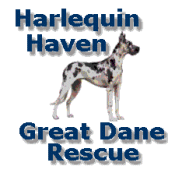|
Bonding with your dog
Dogs are pack animals and need to be part of a
pack. The domesticated dog needs to be part of your family. They
consider your family to be their pack and need to find where they stand
in the pack or family. Consider your rescue dogs as adopted
children. They need extra understanding, love and patience. To have a
loving pet, you need to bond with your pet just as you would with an
adopted child. Remember that you don't know all that your pet has been
through prior to your adopting him. Like most children he won't tell
you everything.
An outside dog, or a dog on a chain, can and will likely become
aggressive. They are unhappy when they are not part of the family!
It is a common belief that only a young puppy will bond with a human
family. Research has shown that dogs under four years old
will bond easily to a new family. Dogs from four to eight years of age
will take longer depending on the personality and experiences of each
dog. Over eight, the dog may or may not bond. Our experience with older
Danes and Saints shows that this is not quite accurate. We have found
that no matter what the personality and/or experiences, the Dane or
Saint will bond if given love, patience, and understanding.
TOOLS FOR BONDING
Experienced rescue people have shown that the following methods
influence bonding and ease the transition when the dog is introduced
into your family. Each is a positive influence.
Maximum time is important. Adopt the dog on the first day or two of a
three day weekend and spend the maximum time with the dog. After that,
the more time that you spend with the dog, the stronger the bond.
Quality time works just as well with dogs as it does with children,
friends, and spouses. Play any fun game with the dog while paying
attention to only the dog and nothing else. Do this for a few minutes at
a time and repeat several times a day.
A good obedience course is a very
valuable bonding tool with the added bonus of training your dog to be a
good citizen.
Companionship is when you are sitting somewhere, doing anything, and
letting the dog lie as near you as possible. Repeat several times a day.
Feeding is important, but where you are is important to the dog:
a) Feeding in a different room (minimum bonding).
b) Feed in the same room with you.
c) Sit near the dog while he eats.
d) Hold the bowl while the dog eats (maximum
bonding). You should not
take food from the dog until you have bonded.
Sleeping close to any family member is important to the dog.
a) Sleeps out of doors (no bonding).
b) Sleeps in garage or basement (minimum bonding).
c) Sleeps in the house. (better)
d) Sleeps in bedroom with parent or child (maximum
bonding).
A regular schedule is the easiest on both people and dogs. Get up each
morning at the same time, feed the dog at the same time, go to bed at
the same time. This is normal for calm people and calm dogs.
Patience is the most important tool. Remember that your dog is in new
surroundings with new people. He needs time to adjust. Don't push! In
most cases the dog has been abandoned by his original family. He will
need to learn to trust and feel secure again.
ALL OF THESE TOOLS ARE INFLUENCES. DO AS MANY AS ARE REASONABLE. NO ONE
METHOD IS GUARANTEED.
All images and text on this site Copyright © 1998-2025 Harlequin Haven Great Dane Rescue, Inc. unless otherwise credited. Use of any image or text without written permission is expressly forbidden. All rights reserved.
|
|
|
